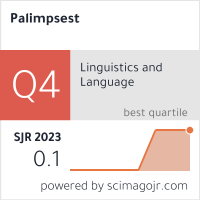ALBANIAN TEACHERS’ AND LEARNERS’ PERSPECTIVES AND EXPERIENCES ON THE COMMUNICATIVE APPROACH
DOI:
https://doi.org/10.46763/PALIM23815249sAbstract
This study explores the implementation of Communicative Language Teaching (CLT) in the English as a Foreign Language (EFL) classroom in Albania, from the perspectives of both teachers and learners. It also investigates the challenges and benefits of implementing CLT in the Albanian context, and to examine how both teachers and learners experience this teaching methodology. The study uses a mixed-methods approach, including surveys and interviews with EFL teachers and learners in Albania. Teachers report that CLT helps to engage learners, promote communicative competence, and foster learner autonomy, while learners report that CLT enhances their speaking and listening skills, increases their confidence, and facilitates real-life communication. Overall, this study contributes to the growing body of research on the implementation of CLT in EFL contexts and provides valuable insights into the experiences of teachers and learners in Albania. The findings suggest that although there are challenges to implementing CLT in Albania, such as limited resources and traditional teaching approaches, both teachers and learners recognize the benefits of using CLT in the classroom. The study has implications for EFL teaching and learning in Albania and other similar contexts, and provides useful recommendations for promoting effective CLT implementation. The study highlights the need for further professional development opportunities for EFL teachers in Albania to effectively implement CLT in their classrooms.
Keywords: Communicative Language Teaching; English as a Foreign Language; Perspective; Experiences; Teachers and Learners.


